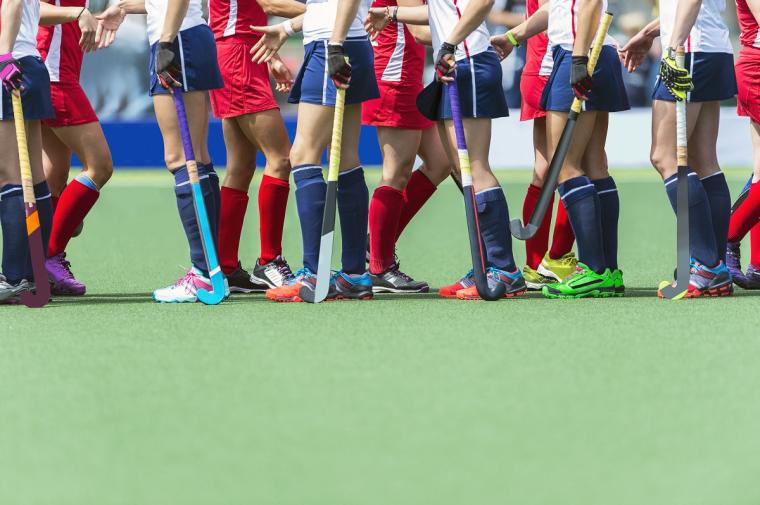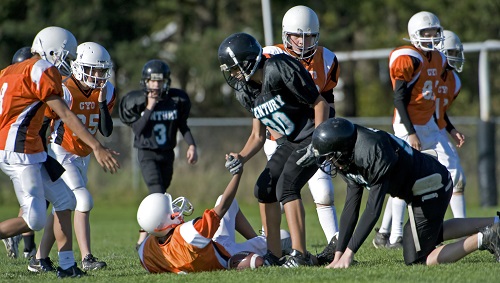
In recent weeks, youth and high school sports organizations have become more aggressive in calling unsportsmanlike conduct on fans.
In New Jersey, parents who balk at calls during Deptford Township Little League games will be required to stand behind the plate to call balls and strikes on their own. Now, neighboring state New York has introduced a “three strikes and you’re out” policy for unruly spectators at high school games.
The New York State Public High School Athletic Association’s new spectator sportsmanship policy will take effect this fall. According to BuffaloNews.com, “the one page, three-tiered policy … establishes guidelines for the discipline and reprimanding of poor behavior by spectators. Those bad behaviors range from verbal harassment to the use of racist and sexist language to harass participants, including athletes, coaches and officials.”
“As we’ve seen spectator behavior decline, we realized the need to give some support to athletic administrators and site supervisors, to take action against fans that are making the student-athlete experience unsafe,” NYSPHSAA executive director Robert Zayas told the paper, adding that the association mulled the policy for at least a couple years. “At times, sportsmanship is an issue at games and at events, and it’s not fair to the student-athletes. What this policy does, it gives the athletic director and site supervisors a policy to go off [of]. In the past, this was done on a case-by-case basis. If one school did it, another school took a different tack. This formalizes what the process is.”
 CNYCentral.com describes the formal process likes this:
CNYCentral.com describes the formal process likes this:
On the first warning, a school administrator will simply direct the spectator or group of spectators to refrain from negative comments or actions. The second warning consists of a personal discussion — and reminding whoever is causing the problem of what comes next — the third strike: removal from the contest.
Any spectator that is removed from a game will then have two options moving forward: suffer a one-game suspension or take a free online course pertaining to fan behavior and be allowed into the next contest.
“It can be something that, if a fan does act unruly at a game, then we give them the opportunity to essentially learn from that mistake,” Zayas told the website, adding that he hopes the new policy will lead to more umpires and referees, too.
While the policy was widely praised statewide, it may not go far enough.
“This is a welcome step and will undoubtedly serve to curb some of the bad behavior of youth sports fans. But it is just one step,” cautions an editorial in the Niagara Gazette. “It bears watching just how strictly these new rules will be enforced. There is the possibility that these warnings could result in even more confrontations that could disrupt games and cause a miserable experience for fans and players alike. It’s also unclear what will happen to repeat offenders and if it would even be possible to enforce a multi-game, or even permanent, ban on certain individuals.”
New York isn’t the only state taking aim at spectator disruptions. In February, the North Dakota High School Activities Association modified its “minimal behavior expectations” for fans. They include everything from respecting the American flag and the National Anthem to wearing clothing that covers the entire torso to refraining from “profanity, negative chants, trash talking, personal attacks and other acts of disrespect.” And “any discriminatory slur will result in immediate removal from the facility.” Artificial noisemakers — including cowbells, megaphones, sirens and whistles — are banned, as is confetti.
But, as a reporter for one of the state’s CBS affiliate television stations pointed out, even the best intended spectator rules and regulations can lead to gray areas. One of those, in particular, is wearing clothing with slogans on them pertaining to political and/or religious/personal beliefs.
“What is considered ‘vulgar, obscene or inappropriate’ clothing? Some may be obvious," wrote Keith Darnay. “But what if I wear a shirt with the slogan ...‘Crush The Cardinals,’ or ‘These NDHSAA Rules Suck!’ If I’m kicked out of the stands at a game because I’m wearing a political slogan that the enforcer of the NDHSAA fan rules doesn’t like, is that person trampling on my First Amendment rights?”
Interpretations aside, the National Federation of State High School Associations appears more intent than ever to “not let a few bad apples spoil the bunch,” in the words of Karissa Niehoff, chief executive officer of the federation. The NFHS has partnered with state high school associations across the country to promote the #BenchBadBehavior campaign to help set a positive tone in local communities via social media posts, videos, flyers and more. Visit BenchBadBehavior.com for details.
“Consider this your rallying cry,” Niehoff recently wrote in her NFHS Voice column. For those of us who just want to watch our kids play and grow, there’s strength in numbers. It’s time to stand up and say enough is enough. It’s time to proclaim what our schools stand for—and what they won’t.”

